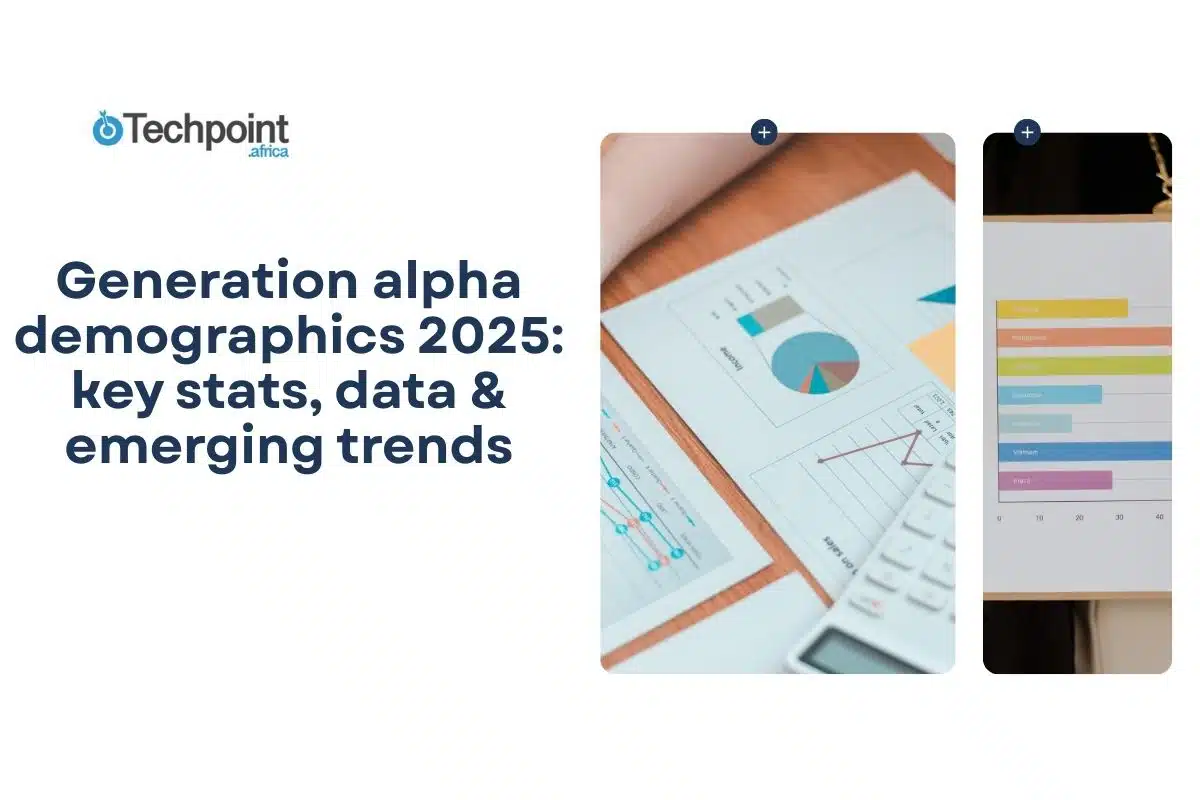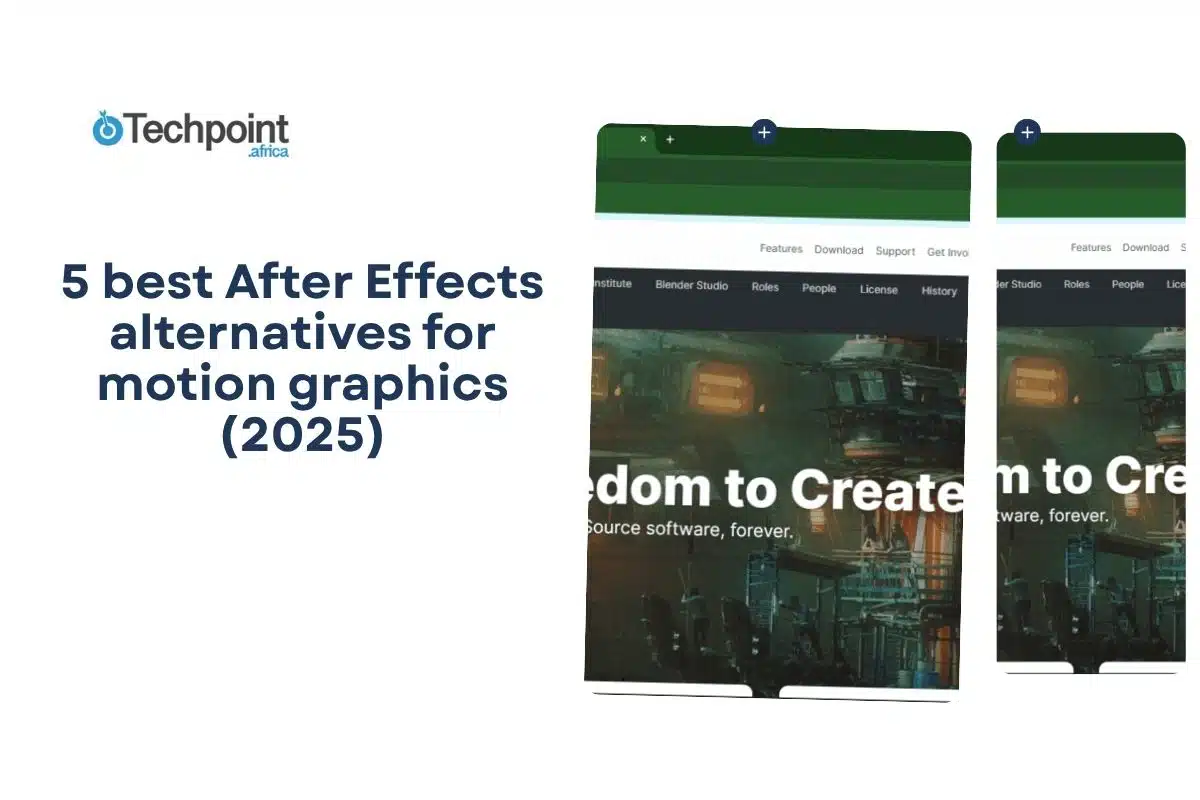I’m a Millennial (Gen Y), which means my grandma was from the Silent Generation, my parents are Baby Boomers, most of my aunties and uncles are Gen X (or the Lost Generation, depending on who you ask), I’ve seen Gen Z come and go, and now here I am watching as Gen Beta begins to arrive. In a way, you can say I’ve been watching generations come and go like iOS updates. But Generation Alpha is a whole new breed.
Born between 2010 and 2025, these kids are growing up in a world where tech isn’t just part of life; it is life. They were born swiping, chatting with AI before they could write full sentences, and consuming content across more screens than some adults can manage. That digital native behavior we used to associate with Millennials or Gen Z is just the baseline for Gen Alpha.
We’ve moved quickly from “Isn’t that too much YouTube for a five-year-old?” to “Well, let him watch CoComelon fourteen more times while I make dinner.” I’m not judging, but that’s the reality today.
And that reality matters. Understanding who Gen Alpha is in 2025 is key to shaping everything from education to marketing, parenting to product design. Whether you’re an educator building learning apps, a marketer crafting toy ads, or an expectant mom just trying to make sense of what Roblox is, this is the generation to watch.
In this article, I’ll walk you through the latest data on Generation Alpha’s size, demographics, tech habits, and emerging preferences. You’ll get a clear picture of who they are, where they live, what they’re watching, how they’re learning, how they interact with the digital world, and what trends are shaping their future.
TLDR: Key takeaways from this article
- Generation Alpha is HUGE. In 2025, Gen Alpha (born 2010–2025) is already 2 billion strong, the largest generation ever, with most growth coming from Asia and Africa.
- They’re born digital, literally. These kids are screen-native from day one. Tablets, smartphones, and smart TVs dominate their digital diet, with screen time averaging 4–8 hours daily.
- They influence household wallets. Despite being kids, Gen Alpha drives major spending through “pester power,” especially on toys, games, streaming, and kid-first tech.
- EdTech is their second language. From AI tutors to gamified learning, Gen Alpha is growing up with tech-infused education and short-form, interactive content at school and home.
- Health is a mixed bag. They’re digitally sharp but physically at risk. Rising screen time is linked to sleep disruption, attention issues, and mental health concerns.
- If you’re a marketer or educator and you’re not designing for Gen Alpha’s short attention spans, mobile-first behavior, and AI-enhanced world, you’re already behind.
Defining Generation Alpha
Let’s start with the basics: who exactly is Generation Alpha?
These are the kids born from 2010 to 2025, making them the first generation entirely born into the 21st century. Some researchers, however, might consider slightly different ranges (e.g., till 2029). If Gen Z grew up with smartphones and streaming, Gen Alpha was born into it, swiping, tapping, and voice-commanding their way through childhood.
They’re the children of Millennials, the younger siblings of Gen Z, and by 2030, they’ll number over 2.2 billion, making them the largest generation in history.
Here’s a quick snapshot of Generation Alpha in 2025:
| Year bracket | 2010 – 2025 |
| Population by 2025 | 2 billion |
| Gen Alpha births per week | 2.5 million |
| Average screen time (2025) | 4 to 8 hours per day (varies by age group) |
| Life expectancy | 73.3 years |
| Most common devices | Tablets, smartphones, and smart speakers |
| Top platforms | YouTube Kids, Roblox, TikTok, Minecraft |
Note: Exact screen time can vary widely, but studies show even preschoolers average 4+ hours of screen exposure per day in some regions. That’s before they even hit the school system.
What makes them stand out?
Gen Alpha isn’t just an upgrade of Gen Z, they’re running on whole new wheels. Here’s what makes them unique:
- Digital-first: Most were tapping screens before they could talk. They know gestures before grammar.
- Screen-native: Platforms like YouTube Kids, Roblox, and touchscreen learning apps aren’t “tech” to them in the way Millennials or even older Gen Zs might consider the, they’re normal life.
- AI-aware: ChatGPT, Alexa, and Siri, these tools aren’t novelties; they’re just how things work in most Gen Alpha households.
- Visually fluent: Emojis, GIFs, and video are core communication methods. They use emojis/GIFs for fun, learning, and self-expression, unlike older generations, who saw them as novelties.
- Multicultural by default: This is the most racially, culturally, and globally diverse generation we’ve ever seen. They’re growing up with representation in media that older generations fought for.
In short, Generation Alpha is growing up shaped by algorithms, ambient computing, and always-on connectivity, in ways even Gen Z wasn’t. That’s not just trivia. It has real implications for how we build apps, design classrooms, tell stories, and parent.
Population growth and distribution
2,586,000 Gen Alphas are born every single week around the globe. That’s like the entire population of Botswana, born every seven days.
As of 2025, there are already nearly 2 billion of them living on Earth. And if projections hold, we’ll be looking at 2.2 billion Gen Alphas by 2030. For scale, that’s more than the combined populations of North America and Europe, and these kids aren’t finished.
Generation Alpha is booming. Going by current projections, Generation Alpha will be the largest generation in history. And this growth isn’t evenly spread.
Where are most Gen Alphas being born?
The top three countries leading the Gen Alpha baby boom are India, China, and Nigeria. These countries alone account for a massive chunk of the generation’s population, pointing to a future that’s increasingly young, multilingual, and centered in the Global South.
Regional snapshot: Where Gen Alpha lives
Generation Alpha is global, but not evenly distributed. Their numbers reveal where the next cultural powerhouses, consumer markets, and education demands will emerge.
Here’s the breakdown:
Asia-Pacific: Home to nearly half of Gen Alpha
About 48% of all Gen Alphas are growing up in Asia-Pacific, with India, China, and Indonesia leading the charge. This region is the epicenter of Gen Alpha’s rise, and it’s not just about volume. It’s where mobile-first habits, hybrid education models, and mega-cities are shaping a generation that’s born into digital density.
Africa: The fastest-growing Gen Alpha population
Some countries like Nigeria are leading this surge, with Nigeria projected to become the world’s third most populous country by 2050. This is a generation growing up with mobile learning, solar-powered classrooms, and leapfrogged tech adoption.
North America
Mostly concentrated in urban and suburban U.S. regions, this group is small but mighty. They’re growing up in a media-saturated, algorithm-shaped culture where school is digital, friendships are hybrid, and toys come with QR codes.
Europe
With birth rates dropping across much of Western and Southern Europe since 2020, Gen Alpha’s footprint here is shrinking. But don’t count them out, European Gen Alphas are still shaping global trends in design, climate innovation, and digital citizenship.
Latin America
8% of Gen Alpha lives in Latin America, with Brazil, Mexico, and Colombia driving the growth. This region’s Alphas are growing up with strong mobile penetration, vibrant youth culture, and a blend of tradition and tech that makes their worldview unique — and super marketable.
Longer lives, bigger futures
The average Millennial born in the early 1980s can expect to live a little over 61 years (global average). But for Gen Alphas born in 2025, their global average life expectancy is 73.3 years, almost a 20% jump.
And the trend doesn’t stop there. There are close to a million centenarians alive today, and with medical advancements, climate adaptation, and AI-powered health tools, some Gen Alphas might realistically see the year 2150.
Urban vs. rural
Location drastically shapes Gen Alpha’s tech access. Most of Generation Alpha is growing up in cities or just outside them. That means early access to tech, faster internet, interactive classrooms, smart devices, and even AI-enhanced learning tools. For urban Alpha kids, talking to Alexa before learning to write is common.
But take a few steps outside the city limits, and the picture changes. Rural Gen Alpha kids often face slower internet, fewer digital tools, and limited access to modern education platforms. While the tech gap is narrowing globally, it’s still very real, and it’s one of the biggest barriers to equality for this generation. For edtech startups, media creators, and policy leaders, that’s the challenge and the opportunity.
Age and gender breakdown
When we talk about Generation Alpha in 2025, we’re looking at a cohort spanning newborns to 15-year-olds. That’s four key age buckets, each in vastly different life stages but united by one digital thread.
Age segments (2025 estimates):
- Ages 0–4 (25%): These are the newest arrivals, many still learning to walk, but already swiping on tablets.
- Ages 5–9 (30%): The prime age for entry into formal education and early digital habits. This group is deeply influenced by YouTube Kids, Roblox, and learning apps.
- Ages 10–14 (35%): Older Alphas are already participating in the creator economy, using AI tools for school, and engaging with pre-teen social platforms.
- Age 15 (10%): The “eldest” Gen Alpha and early adopters of everything from virtual learning to TikTok trends and digital activism.
Gender ratios in 2025:
Globally, Generation Alpha tends slightly towards males, accounting for 51-52% of births. In reality, this is close to 50/50 in gender distribution, but a few regional variations stand out.
- Asia-Pacific: Slight male tilt in countries like China and India due to longstanding socio-cultural factors. For example, in a country with past gender preference policies (e.g., China’s one-child policy), legacy effects still echo in current population stats.
- Europe & North America: Balanced gender split, with increasing visibility of nonbinary and gender-diverse identities among older Alpha teens. Gender expression is becoming more fluid in Western regions, especially among Gen Alpha teens, prompting updates in how data is collected and interpreted.
So while the raw numbers may look close to even, the way gender is expressed, supported, and measured is evolving fast, and brands, educators, and researchers need to catch up.
Digital behavior: How Gen Alpha lives online in 2025
If Millennials were digital pioneers and Gen Z were digital natives, Generation Alpha is full-on screen-native. They’re growing up in a world where every toy talks, every show streams, and every answer is just one “Hey Siri” away.
Device ownership (2025 snapshot)
By the time they hit age five, most Gen Alpha kids already have access to multiple devices. Here’s a look at global device ownership (access, really) rates:
| Device type | Estimated global ownership (ages 5–15) |
| Tablets | 49% |
| Smartphones | 63% (often shared or restricted use) |
| Handheld gaming console | 30% |
| VR headset | 12% |
| Wearables (e.g., smartwatches) | 29% |
| Laptops/Chromebooks | 38% (common in schools) |
Tablets remain the go-to, but smartphone access is creeping younger year by year, especially in North America and Southeast Asia.
Average daily screen time
In 2025, Generation Alpha lives on screens. Between smart TVs, tablets, phones, laptops, and even smart speakers, they’re plugged in from the jump. The average Alpha child aged 8 to 12 clocks 4 hours and 44 minutes of screen time per day. By their teen years (13 to 18), that jumps to a jaw-dropping 7 hours and 22 minutes daily. This includes everything: schoolwork, gaming, entertainment, and social apps.
These kids are multi-screening like pros, watching YouTube while doing homework on a tablet, asking Alexa for facts, and texting a friend on their smartwatch. What Millennials considered peak multitasking is what Gen Alphas know as the norm.
Favorite platforms by age
| Age group | Top platforms |
| 0–4 | YouTube Kids, Khan Academy Kids |
| 5–9 | Roblox, PBS Kids, Scratch, ABCmouse |
| 10–14 | TikTok, Minecraft, Duolingo, YouTube |
| 15 | TikTok, Instagram, Google Classroom |
YouTube Kids is the undisputed go-to platform for Gen Alphas, but Roblox is where the real Gen Alpha economy is taking shape, complete with virtual stores, creators, and community role-play.
Parental controls and digital safety
- 85% of parents in developed markets use at least one form of digital control (screen time limits, app blockers, safe mode).
- AI-powered content filtering tools are on the rise, particularly in EdTech and video platforms.
- However, awareness gaps exist in emerging regions, where affordable parental tech solutions are still catching up.
What’s clear is that more than going online, Gen Alpha lives online. And brands, platforms, and educators will need to meet them there, thoughtfully and responsibly.
Education and earning trends: How Gen Alpha learns in 2025
Forget everything you thought you knew about “school.” Chalkboards? Dead. Morning assembly? Optional. For Generation Alpha, education isn’t something that happens in a building. It’s a multi-platform, multi-sensory, algorithm-assisted experience.
Yes, they’re still learning from teachers. But they’re also learning from adaptive AI tutors, gamified math apps, YouTube explainers, and real-time feedback tools. Their classrooms can be the kitchen table, Roblox with an educational overlay, or an app on the way to soccer practice.
The numbers behind Gen Alpha’s learning shift:
- 90% of Gen Alphas are projected to earn a high school diploma (compared to 80% of Gen Z).
- 50% are expected to complete a university degree, making them the most formally educated generation in history.
- 41% of students globally now participate in hybrid education setups, a combo of in-person and digital learning.
When the pandemic cracked open the remote learning door, Gen Alpha walked through it and has kept it open. The oldest of them (now teens) lived through at least one full school year online, and it became a foundation.
Now, in 2025:
- 72% of students use one digital device or the other in the classroom. 44% of students use school-provided devices, with another 28% bringing their own from home.
- In countries like the U.S., India, and South Korea, digital-first curricula are taking over entire school districts.
- Homeschooling via EdTech platforms is booming, especially for mobile-first families, expats, and parents who want more control over their child’s education experience.
And let’s not forget career preparation. The majority of Gen Alpha is being trained for jobs that don’t exist yet. These kids might be AI ethicists, virtual habitat architects, or robotic wellness coaches. Their education will help build and sustain a tech-heavy world, expanding fields like Artificial Intelligence and blockchain technology.
Education platform and app preferences
Gen Alphas are learning through games, simulations, and interactive storytelling. Favorites include:
- Khan Academy Kids for foundational learning.
- Duolingo for languages (yes, even 6-year-olds).
- Tynker and Code.org for early coding skills.
- Prodigy and SplashLearn for gamified math.
- Google Classroom for school-level coordination.
Expect bite-sized, feedback-driven content to win, think 3–5 minute modules with instant rewards and progress badges.
Smarter tools for shorter attention spans
Gen Alpha’s attention span isn’t built for hour-long lectures. But they’re remarkably good at deep-diving into interactive material when it’s personalized, goal-oriented, visually engaging, and rewarded in real time. That’s why gamification and adaptive learning have become essential pillars in modern classrooms.
Early exposure to AI, gamified learning, and coding
In 2025, the average Gen Alpha student is more AI-aware than some working professionals. Why?
- 46% of them (ages 7–14) use AI-enhanced learning tools at least weekly.
- AI tutors and homework helpers (like chatbots) are embedded in apps.
- Coding is no longer optional, it’s part of the core curriculum in schools across Singapore, Estonia, and parts of the U.S. Many kids can now build simple games in Python before they can write full cursive sentences.
Curriculum shifts worth watching
Schools are adjusting their content and delivery to better engage this hyper-digital generation:
- AR/VR modules for history, science, and geography.
- Digital citizenship and media literacy as core subjects.
- Entrepreneurial education via simulation platforms.
- Mental wellness tools integrated into learning platforms.
Gen Alpha won’t just be the most educated generation, they will also be the most custom-educated. If your content, product, or curriculum isn’t personalized and digital, they’ll scroll past it like last month’s TikTok trend.
Spending habits and consumer preferences
Generation Alpha might not have credit cards yet, but they are reshaping household spending, with their influence on household spending getting massive and growing by the year.
Household spending on Gen Alpha
In 2025, households are spending between $1,300 and $2,100 per Gen Alpha child each year, and that’s just the average. Some spend up to $2,340 annually per kid, depending on things like income, ethnicity, and family structure.
- That’s $78 per week for white children.
- $70 weekly for kids with married parents.
- And $100 per week for children in high-income households.
Wherever your kid falls on the family tree, chances are they’re eating up a significant portion of your monthly budget, literally and digitally.
What they’re spending (your money on
Here’s where the money goes:
- Toys & games (digital-first, of course).
- Streaming & EdTech Subscriptions.
- Apparel (streetwear for 10-year-olds? Yes).
- Food and snacks.
- School supplies and tech.
- Miscellaneous (decor, gifts, accessories, that mystery slime kit).
And while the purchases might have your name on the receipt, make no mistake, Gen Alpha is driving the decisions.
Pester power: Tiny voices, big wallet impact
This generation doesn’t just consume, they negotiate, influence, and persuade. Marketers call it “pester power,” that is, the ability of Gen Alpha to shape what gets added to the cart.
- 73% of parents say their children influence what streaming services they subscribe to.
- 62% of toy and game purchases are swayed by a child’s request, often driven by YouTube, Roblox ads, or peer influence.
- And “co-viewing purchases” (when parents buy something based on what you watched together) are now a legit trend.
Conscious spending & sustainability signal
Gen Alpha is pushing values, too. Thanks to their early exposure to climate topics and local challenges, they’re nudging their parents toward sustainable products.
In Southeast Asia, 68% of parents are now willing to pay more for eco-friendly items, not just because they care, but because their kids do.
The kid economy’s top spending categories in 2025
The 2025 kid economy is dominated by:
- Digital-first toys (think: AR board games, programmable plushies).
- Gaming subscriptions (Roblox Premium, Minecraft Realms, Nintendo Switch Online).
- Content streaming platforms (YouTube Premium Kids, Disney+, Spotify Family).
- Mini fashion (streetwear for 10-year-olds is a thing now).
- Merch: Gen Alpha loves wearing their fandoms, from Bluey hoodies to Sonic sneakers.
Kid-targeted marketing trends
If you’re marketing to Gen Alpha in 2025, forget billboards and jingles. Here’s what’s working:
- Interactive ads on kid-friendly platforms like YouTube Kids and Roblox.
- Branded in-game items (skins, power-ups) in mobile games.
- Short-form influencer content with unboxings, play-throughs, and “what I got for my birthday” vlogs.
- Subscription boxes for kids (think: STEM kits, crafts, monthly books).
- STEM-themed subscription boxes.
Gen Alpha expects brands to speak their language. And if your message doesn’t come with a meme, a mascot, or a catchy sound effect, they’re swiping left.
Early brand loyalty
By the time they hit age 8, Gen Alpha already:
- Recognizes and favors specific logos,
- Has a preferred sneaker brand.
- May even have an opinion on toothpaste (thanks, influencer reviews).
This early attachment is a goldmine for long-term customer acquisition. Brands like LEGO, Nike, Nintendo, and Crayola are playing the long game and winning.
Health and well-being metrics: How healthy is Gen Alpha in 2025?
For a generation growing up with smart screens, smart fridges, and smart everything, Gen Alpha is ironically facing some very human challenges. Physical activity is down. Anxiety is up. And while they can swipe before they can write, navigating wellness is an ongoing concern for them and the adults raising them.
Physical activity and obesity trends
Let’s start with the good news.
- Wearables and fitness gamification are nudging some kids to move more, though many still aren’t moving nearly enough.
- Only 27% of Gen Alpha kids meet the WHO’s recommended 60 minutes of daily physical activity.
- Childhood obesity rates are climbing, particularly in urban and high-income areas. In the U.S., for example, nearly 1 in 5 Gen Alpha kids is classified as obese in 2025.
The reason isn’t farfetched. Between more screen time and fewer recess periods, the typical Gen Alpha day involves a lot of sitting.
Nutrition and access to healthy foods
Gen Alpha’s diets are increasingly being influenced by influencer content, TikTok food trends, and fast food marketing. In regions like North America and Western Europe, snackification is the norm, from protein bars and bento box meals to air-fried everything. While in lower-income and rural areas (particularly parts of Africa and South Asia), nutritional inequality remains stark, with undernourishment still a major issue. Globally, there’s a growing push for “kid-friendly wellness” campaigns, with nutrition education now being delivered through games, apps, and even school-issued wearables.
Mental health patterns
Here’s where everyone should pay attention:
- Rates of childhood anxiety and attention disorders have risen by 22% since 2020.
- 58% of children exhibit symptoms of burnout by age 12. This is a leap from 22% of Generation Z at the same age.
- Several Gen Alpha parents report that their child has experienced symptoms of anxiety, attention challenges, or digital burnout by age 12.
- Screen overstimulation, fast-paced content, and the pressure of always being “on” have created new stressors for children under 15.
- In regions with high academic pressure, like parts of Asia and the U.S., mental health apps for kids have surged in popularity.
Screen time’s impact on sleep and social skills
It’s no secret that screen time affects sleep. But for Gen Alpha, late-night device use is almost normalized, even in elementary school. But the effects are looking too good.
For instance, kids who use screens after 8 pm are 30% more likely to report poor sleep quality. There’s also mounting evidence that excessive short-form video exposure (YouTube Shorts and TikTok) is impacting attention spans and emotional regulation.
Socially, digital natives are more emoji-literate than face-to-face fluent, leading to calls for stronger emotional literacy programs in early education.
The role of parents and tech detox culture
Fortunately, parents are catching on and reacting appropriately.
For example, the use of tech-detox tools, like app timers, screen-free zones, and kid-friendly mindfulness apps, has jumped by 40% since 2022. More households now build in “digital sabbath” days, where the entire family unplugs from everything digital. Parental modeling, where adults also reduce screen time, is proving to be the most effective approach to improving Gen Alpha’s digital wellness.
Media and entertainment
Gen Alpha spends more time on their screens (TV, smartphones, tablets, etc.) than any other generation. Kids aged 8 to 12 in 2025 spend an average of 4 hours and 44 minutes per day staring at screens. And that’s just one age bracket.
If Gen Alpha had a motto, it would probably be “Skip Intro.” They’re streaming, swiping, and spectating their way through 2025 with media habits that are reshaping the entire entertainment industry.
If Millennials were the “texting generation” and Gen Z grew up on Snapchat and TikTok, Gen Alphas are practically born with a screen in hand.
Top platforms: Where Gen Alpha lives online
These platforms are digital playgrounds, babysitters, and social hubs rolled into one.
50% of Gen Alpha, including the very youngest 0-4 age bracket, is streaming videos daily. YouTube and Disney+ are the most popular video streaming services for them. They average 24 minutes and 23 seconds on YouTube each visit. 51% of the generation hears about brands first through this medium. Still the undisputed champs of screen time.
For them, Netflix is less about bingeing shows, more about rewatching the same shows on loop. Roblox, more than just a game; it’s a social network, a development platform, and a babysitter for millions. For the 10–14 crowd, Fortnite is a go-to space for hanging out in virtual concerts or custom-built islands. Older Gen Alpha users (13+) are increasingly discovering TikTok via sibling or parent devices, mostly through funny filters, pets, and educational clips.
Social media and content creation
Gen Alpha is already on social media. Sure, many accounts are technically parent-supervised, but that doesn’t stop these kids from navigating platforms like they were born to do it (because, well, they were). In a 2022 study, over 55% of kids aged 7–12 said they used social media apps.
While Facebook might as well be a digital fossil to them, YouTube is practically a rite of passage. It’s where many start, watching kid-friendly videos and slowly transitioning into creating their own. From there, they graduate into TikTok, Snapchat, and Instagram, drawn to short, visual, and very now content.
But Gen Alpha doesn’t just consume content; they create. These kids are out here filming dance challenges, reviewing toys and games on their own YouTube channels, playing with AR filters and making interactive stories, and testing AI tools like it’s second nature. The kid influencer market is expected to grow globally in 2025, fueled by family vlogs, toy reviews, and gaming streams. Platforms like Zigazoo (a TikTok for kids) and Grom Social are booming with under-13 creators, offering kid-friendly social media alternatives to platforms like TikTok and Snapchat.
Since they were talking to Alexa before they could spell their names, it’s not odd that many are already interested in AI, robotics, and content creation by as early as age 10. Nearly 42% of Gen Alpha (and Gen Z) parents say their kids are curious about AI tools, especially generative AI and robotics.
Gaming is not left out. Platforms like Minecraft and Roblox are Gen Alpha’s playgrounds and production studios rolled into one. 58% of kids aged 8–15 played Minecraft in the last month, 43% played Roblox, and around 2 in 5 say they prefer games where they can build or create something.
Content preferences: Short, smart, and repeatable
Gen Alpha kids have their taste when it comes to content consumption. Generally, Gen Alpha prefers interactive and customizable content, not passive consumption.
First things first, cartoons remain king. But animation style matters. Bright, fast-moving, meme-able visuals win, always.
Edutainment is booming. Think bite-sized science facts, how-to-make-it clips, and explainer animations. Short-form videos also dominate. The under-10 attention span has migrated toward 2–3 minute videos over 20-minute episodes.
TV is (going) out
Broadcast TV is becoming a thing of the past. Most of Gen Alpha’s media consumption is on-demand or algorithm-driven. They favor platforms like YouTube Shorts and TikTok, which offer personalized short-form, on-demand content through algorithms.
Even “live” experiences (e.g., livestreams, game events) are now framed through apps and screens, not cable schedules. Smart speakers and voice-activated controls are shaping how Gen Alpha requests and interacts with content.
In summary, this generation expects instant, personalized, and portable entertainment.
Engagement levels (rewatches and rituals)
The average Gen Alpha child watches their favorite video multiple times before moving on. Roblox users in the 9–12 bracket spend an average of 2.5 hours daily in-game, often on user-generated content. Parental controls reveal that “safe zones” like YouTube Kids see higher retention rates than open platforms.
Content creators targeting Gen Alpha should take note that repeat viewership means comfort, routine, and familiarity for these kids.
2026 and beyond: What’s next for Gen Alpha?
By 2026, the oldest members of Generation Alpha will be turning 16. That means the world would have gone from preparing for Gen Alpha to “reacting” to them. Their influence is snowballing fast, and if 2025 was the warm-up, what’s coming next could rewrite the rules of how we build tech, teach kids, and market to families.
The next wave of digital tools
The tech they’re growing up with will look outdated within a few years. What could be coming next:
- AR/VR classrooms: Headsets made specifically for smaller heads and shorter attention spans are hitting the market. Virtual field trips, immersive history lessons, and AR-enhanced learning are moving from novelty to norm.
- Wearables for kids: Think smartwatches with built-in parental control, fitness tracking, and even emotional feedback. Kids’ wearables are projected to cross $10 billion by 2027.
- EdTech embedded: Platforms like Duolingo and Khan Academy are already working on AI-native interfaces, where bots become co-learners, not just assistants.
AI companions and smart toys
AI companions are emerging as educational playmates and emotional support systems. These aren’t just Siri spinoffs; they’re toys that learn your kid’s favorite stories, songs, and jokes.
Companies like Embodied are developing social robots that teach empathy, collaboration, and even mindfulness. Expect toy-to-tech crossovers, think LEGO meets ChatGPT.
I’m not saying these tools will replace parents or teachers. No. But they will present, become necessary, and reshape how kids explore the world.
Cultural imprint: The first generation raised by creators
Gen Alpha is not growing up under traditional celebrity influence. They’re being shaped by micro-influencers and niche creators, interactive stories over passive media, and community-led trends instead of top-down entertainment.
Their heroes are most likely not actors or musicians; they’re Minecraft builders, Roblox developers, and kid YouTubers. Gen Alpha’s cultural fingerprint is already showing up in fashion (DIY aesthetics), slang (creator-driven lingo), and even activism (climate and digital rights). Expect this only to intensify by the end of the decade.
What does this mean for you?
By now, I think we can agree that Gen Alpha runs on an entirely new operating system. Their worldview, shaped by tech, speed, and constant change, is already forcing us to rethink how we build, teach, market, and connect.
Only one question remains: What do you do with all this Gen Alpha data?
Here’s my take, depending on where you stand:
If you’re a marketer:
- Speak their language (or their parents’). Your media asset should be quick, visual, mobile-first, and value-packed.
- Prioritize mobile-first platforms like YouTube, Roblox, and TikTok, where they naturally hang out.
- Start early. Brand loyalty for Gen Alpha begins before age 10.
- Be real. They can smell pandering from a mile away, and they’ll scroll right past you.
If you’re an educator:
- In addition to textbooks, Gen Alpha thrives on gamified learning tools, bite-sized content modules, and AI-powered feedback loops.
- Think in interactive pathways, not linear curricula.
- And while they’re tech-native, they still need digital resilience and critical thinking taught like core subjects.
If you’re a developer:
- Design for touch-first, mobile-heavy, and short-attention-span experiences.
- Build in parental controls and privacy-first features upfront.
- Give them room to customize, remix, and create. Gen Alpha wants to also build, not just use.
If you’re a community builder:
- Create safe, moderated spaces where kids and their caregivers feel seen.
- Encourage collaborative play, such as challenges, user-generated content (UGC), fan-created content, and the like.
- Lead with trust, transparency, and inclusion. Gen Alpha is more diverse than any generation before it.
If you’re a researcher or policymaker:
- Keep an eye on the digital divide. From rural tech access and digital literacy to household income and cultural context, Gen Alpha’s experience isn’t uniform, and your data or policy should reflect that.
- Focus on mental health and digital wellbeing. These kids are coming of age in an always-on world. Research what that means long-term, and craft policies that protect without patronizing.
- Regulate with foresight, not fear. AI isn’t going away. Help build ethical frameworks around things like deepfakes, algorithmic bias, and child data privacy.
- Push for equity in education and tech access. Gen Alpha deserves inclusive systems that adapt to them, not the other way around.
- Create age-aware governance. This generation is growing up fast, but they’re still kids. Think digital
Conclusion
Generation Alpha is the youngest generation. They’re also the most plugged-in, tech-native, and fast-evolving cohort we’ve ever seen. From screen time habits to AI-powered learning tools, their world is already radically different from what Millennials or even Gen Z grew up with.
By 2025, the numbers tell a story of a generation that’s more connected, more influential in household spending, and more comfortable with digital tools than any before. But they’re also facing serious questions around health, mental well-being, and how much screen is too much screen.
The key for brands, educators, and developers is to meet them where they are, design for how they live, and build for the future they’re shaping.
FAQs about Generation Alpha
What are the birth years for Generation Alpha?
Generation Alpha includes those born from 2010 to around 2025. However, it’s not unusual to see varying age brackets. For instance, some researchers say it stops at 2024 and others argue it’s till 2026.
How big is Generation Alpha in 2025?
As of 2025, there are over 2 billion Gen Alpha members globally, making them the largest generation of the decade.
Which countries have the largest Gen Alpha populations?
Countries with the highest Gen Alpha numbers include India, China, Indonesia, and Nigeria, driven by high birth rates and large populations.
What devices do Gen Alpha use most?
They primarily use tablets and smartphones, often from a very young age. Gaming consoles, smart TVs, and wearables are also regular fixtures.
Are Gen Alpha kids learning differently?
Yes. They’re more likely to use gamified apps, AI tutors, and bite-sized content formats, with many experiencing hybrid or remote learning setups.
Why does Gen Alpha matter to marketers and educators?
Because they’re forming habits now that will shape the next two decades of tech use, media consumption, learning preferences, and consumer behavior.
Disclaimer!
This publication, review, or article (“Content”) is based on our independent evaluation and is subjective, reflecting our opinions, which may differ from others’ perspectives or experiences. We do not guarantee the accuracy or completeness of the Content and disclaim responsibility for any errors or omissions it may contain.
The information provided is not investment advice and should not be treated as such, as products or services may change after publication. By engaging with our Content, you acknowledge its subjective nature and agree not to hold us liable for any losses or damages arising from your reliance on the information provided.
Always conduct your research and consult professionals where necessary.











